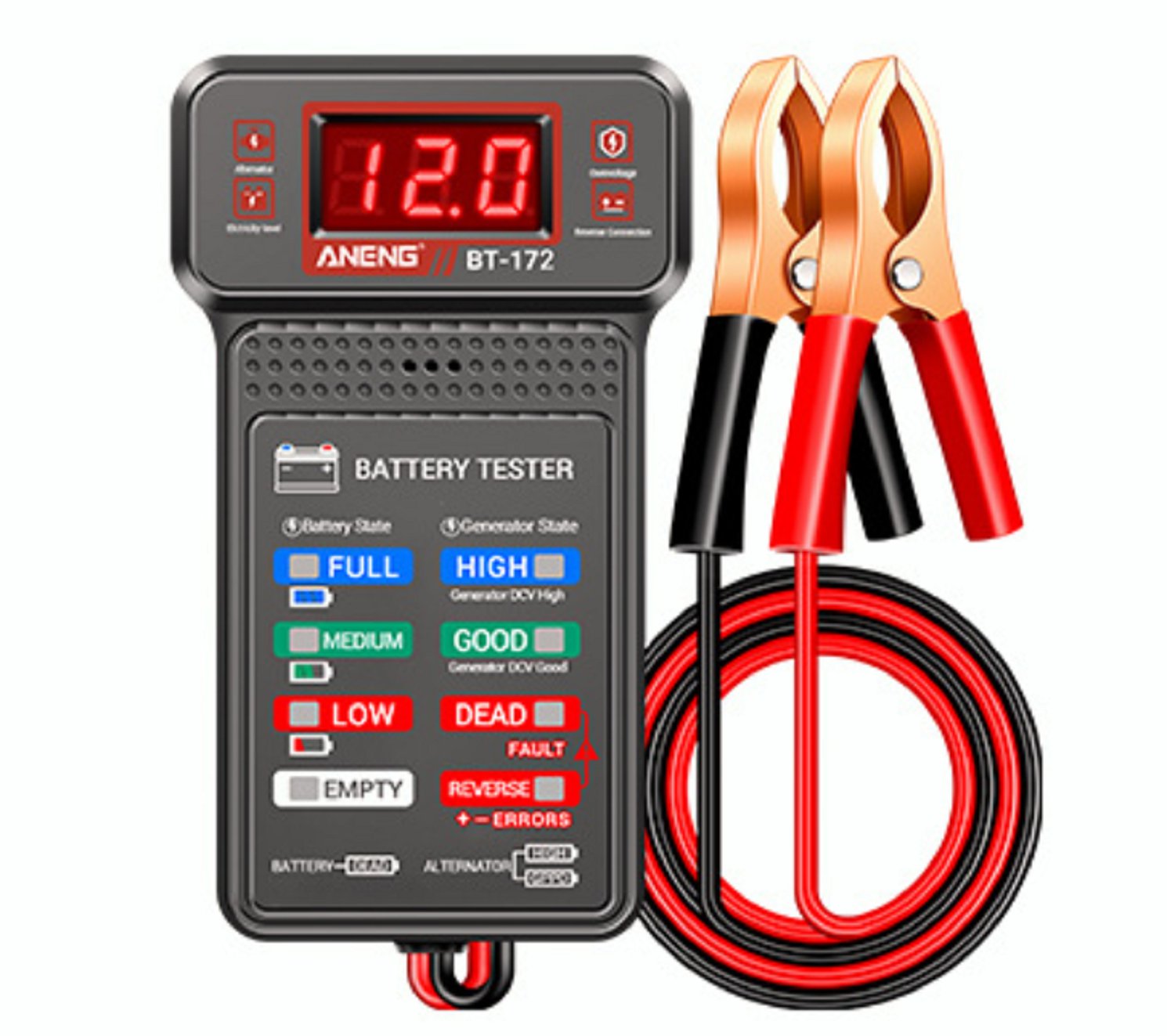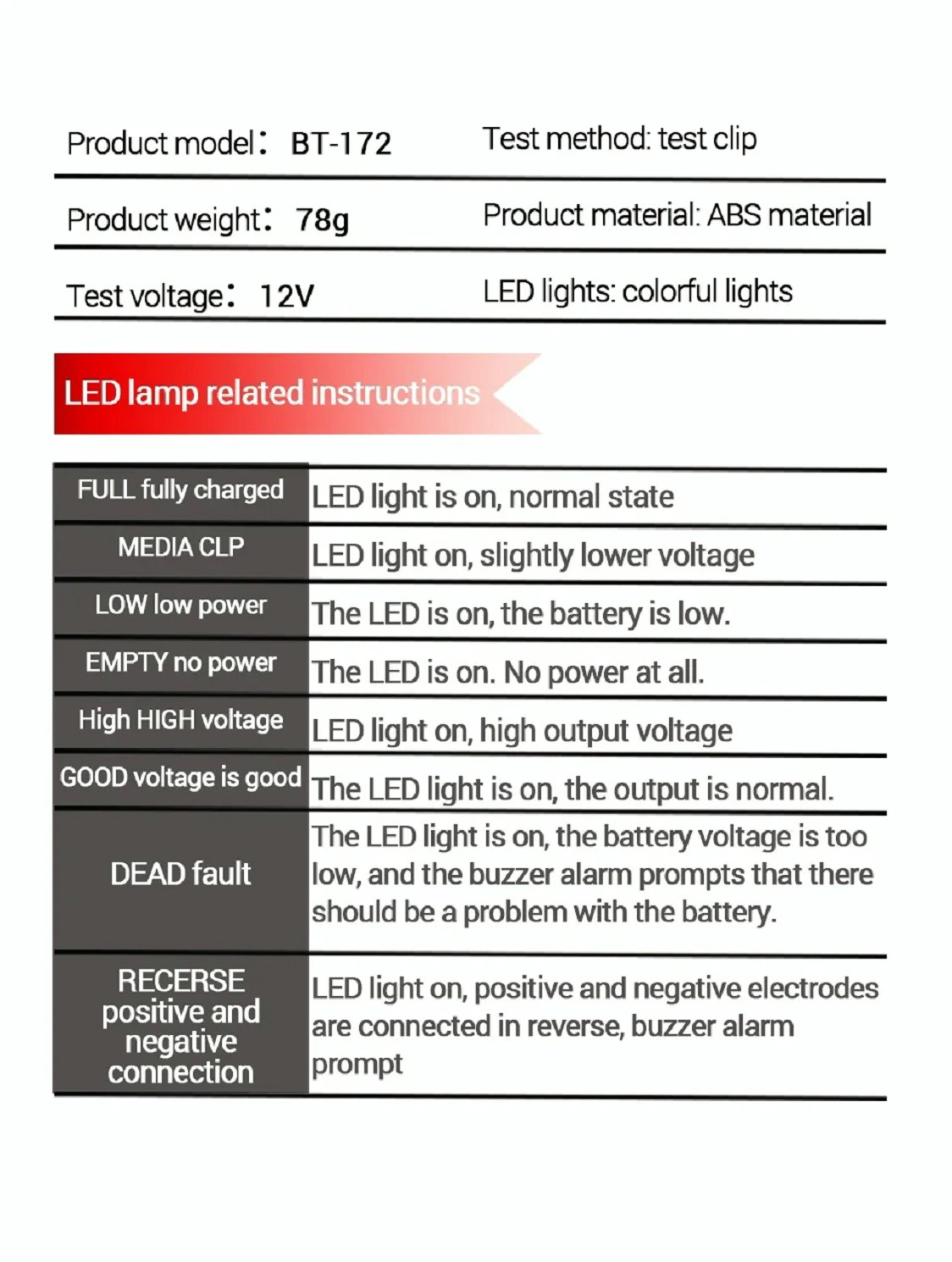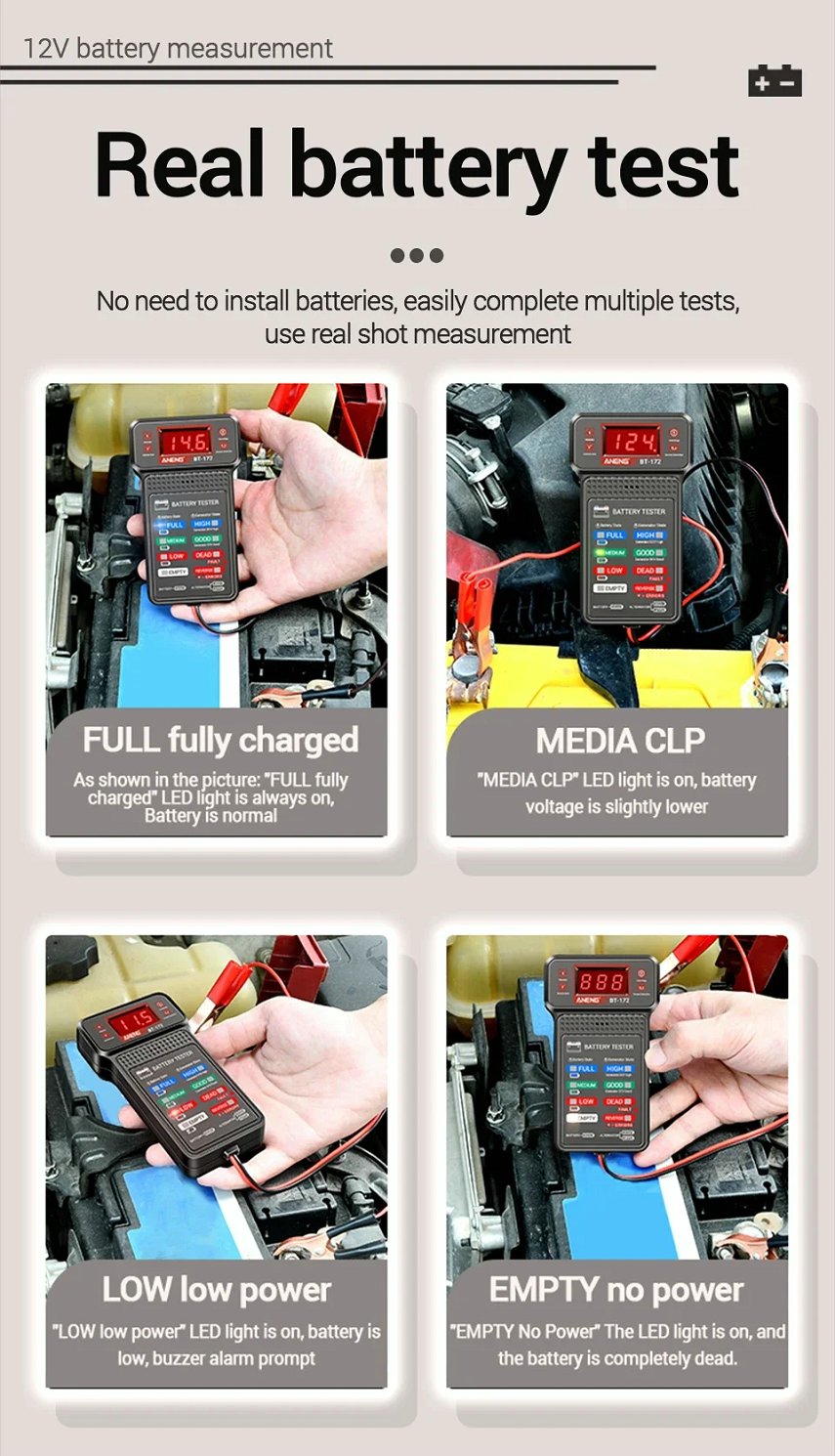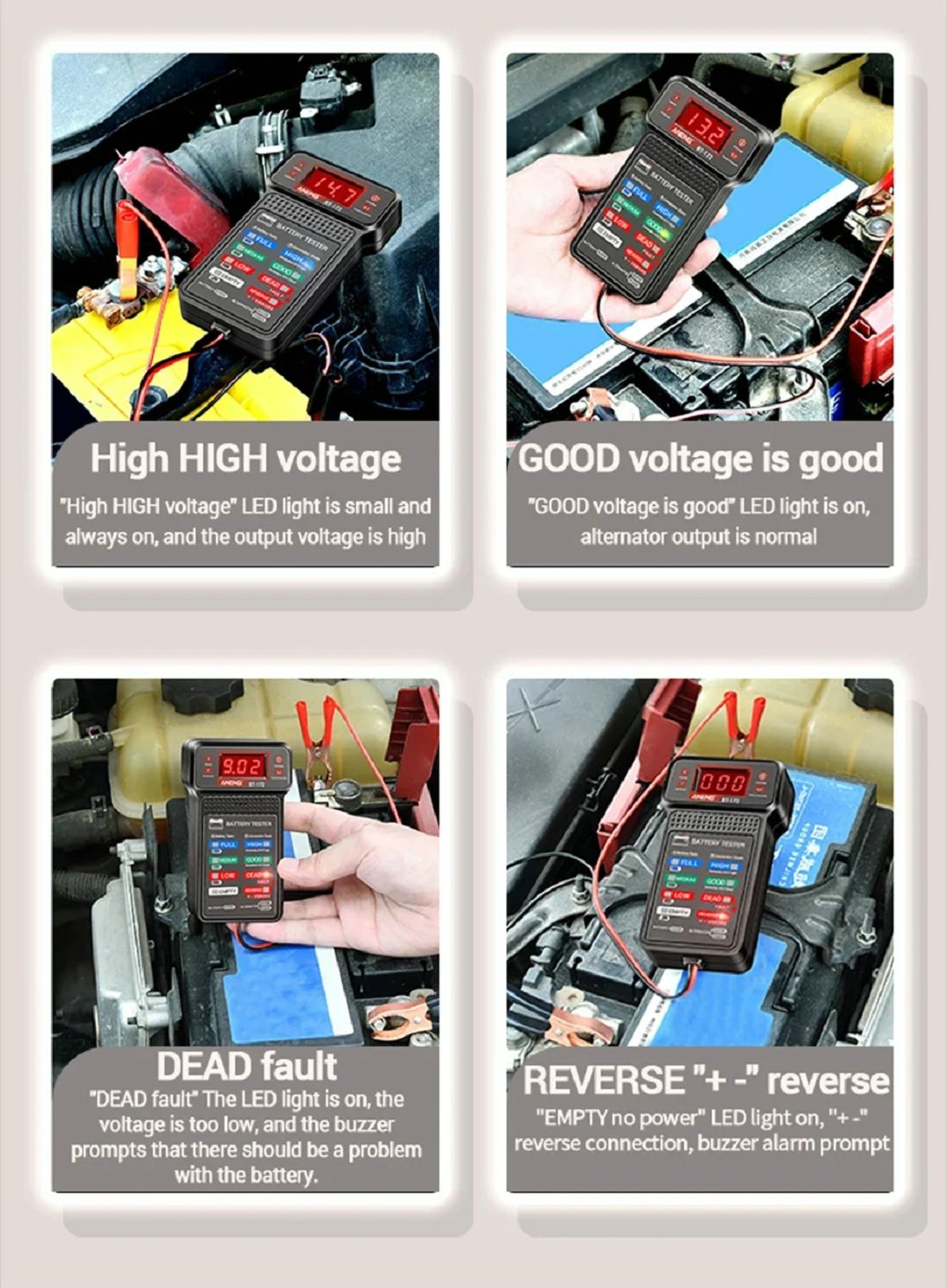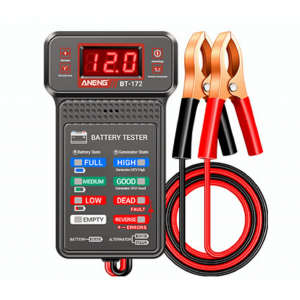HS7323 ANENG BT-172 12V Digital Battery Tester
Function:
1. Designed for testing 12V battery voltage or charging series voltage
2. Equipped with LED display screen and LED battery status indicator light
3. Rubber body with crocodile clip for connection
4. Equipped with reverse connection alarm and overvoltage protection functions
Operation Instruction:
1. Correctly connect the instrument battery clip to the battery terminal, with the red clip connected to the positive pole "+" and the black clip connected to the negative pole "-". If they are reversed, the LED display screen will not display, the PEVERSC indicator light will light up, and an alarm prompt will be issued
2. After proper connection, the LED display screen will show the real-time voltage of the tested battery, and the LED light will light up to indicate the battery status
3. When testing the generator charging system, please ensure that the tester is correctly connected to the battery terminals, and then start the generator. At this time, the output voltage will be displayed on the LED display screen, and the right LED indicator light will light up to indicate the status of the generator
LED lamp related:
|
FuLL fuly charged
|
LED light is on,normal state
|
|
MEDIA CLP
|
LED light on,slightly lower voltage
|
|
LOW low power
|
LED light is on, battery is low, beep alarm
|
|
EMPTY no power
|
The LED is on. No power at all.
|
|
High HlGH voltage
|
LED light on, high output voltage
|
|
GOOD voltage is good
|
The LED light is on, the output is normal.
|
|
DEAD fault
|
The LED light is on, the voltage is too low, the buzzer alarm prompts, there should be a problem with the battery.
|
|
"+-"polar connection
|
LED light on, "+-" reverse connection, buzzer alarm prompt
|
Package:
1 * Battery Tester
1 * Packing Box
1 * Instruction Manual
Usage Precautions:
1. Do not touch the probes directly with your hands to avoid electric shock and ensure personal safety during testing.
2. Before use, inspect the test probes to ensure there is no damaged insulation or exposed metal.
3. Do not use the current and voltage ranges interchangeably to prevent damage to the instrument.
4. It is best to remove the batteries when not in use for a long time to prevent battery corrosion of other internal components of the instrument.
5. If you do not know the magnitude of the voltage or current to be measured, start with the highest range and then select the appropriate range based on the measured value.
